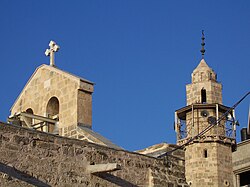The Zeitoun killings refer to the Israeli military incursion, led by the Givati Brigade unit of the Israel Defense Forces (IDF), into the Zeitoun district of Gaza as part of the three-week 2008-09 Gaza War. In the Arab world, it is referred to as the Zeitoun District Massacre (Arabic: مجزرة حي الزيتون). A total of 48 residents of Zeitoun were killed, most of them women, children, and the elderly; 27 homes, a mosque and a number of farms were destroyed by Israeli forces.The New York Times reported that during the three-week conflict "few neighborhoods suffered more than Zeitoun." A report released by United Nations Office for Humanitarian Affairs stated that the attack on the Samouni family, who were among the Zeitoun victims, was one of the "gravest incidents" in the conflict. According to Haaretz, the IDF delayed rescue services from reaching some of the casualties for three days of the incident.Zeitoun residents believed that because the area is a natural choke point where the Gaza strip narrows to just four miles wide, Israeli troops turned their neighborhoods into a military base from which to launch their operations. The IDF has refused to discuss individual charges in detail, but an army spokesman speaking on the condition of anonymity with The Los Angeles Times said, "As a matter of policy, we do not target civilians." He added, "These situations are very complex and our soldiers do the best they can."Lt. Col. (ret.) Jonathan D. Halevi of the Jerusalem Center for Public Affairs, an Israeli think tank and advocacy organisation, said that printed flyers from Palestinian Islamic Jihad and its associated websites named five members of the Samouni extended family as being affiliated with the group in some role. Halevi also states that militants from that organisation were operating in the area around the time Israeli tanks began shelling the group of homes belonging to the Samouni extended family.According to the New York Times, members of the Samouni family "did not deny that Hamas militants operated in the area. A family member said there was no active Hamas resistance in the immediate vicinity, although militants were firing rockets at Israel a little more than a mile away." Newsweek reported that the survivors of Zeitoun all insisted that they were simply farmers and that their area had never been used to fire rockets.


